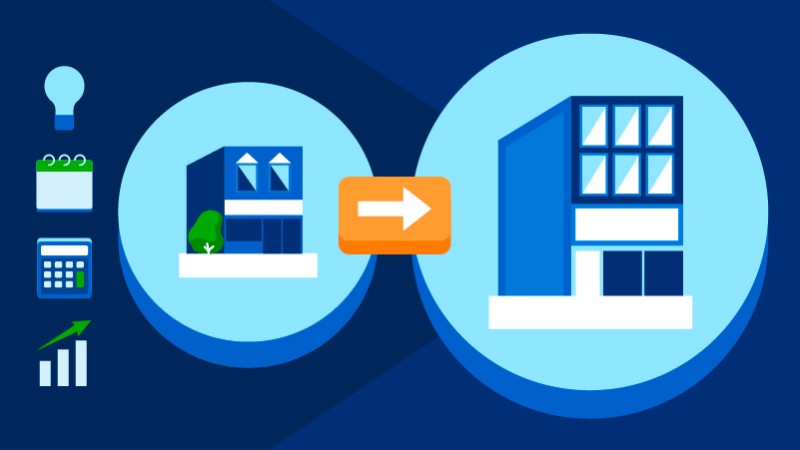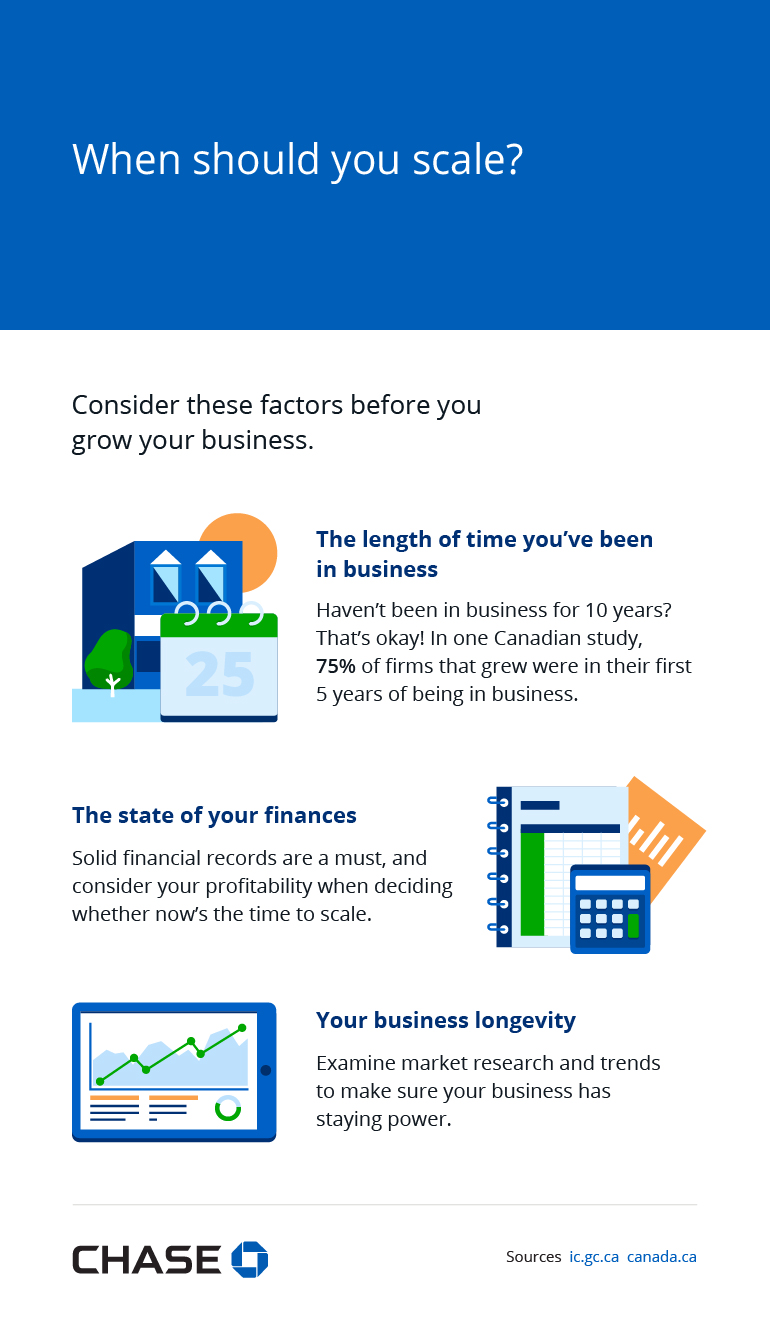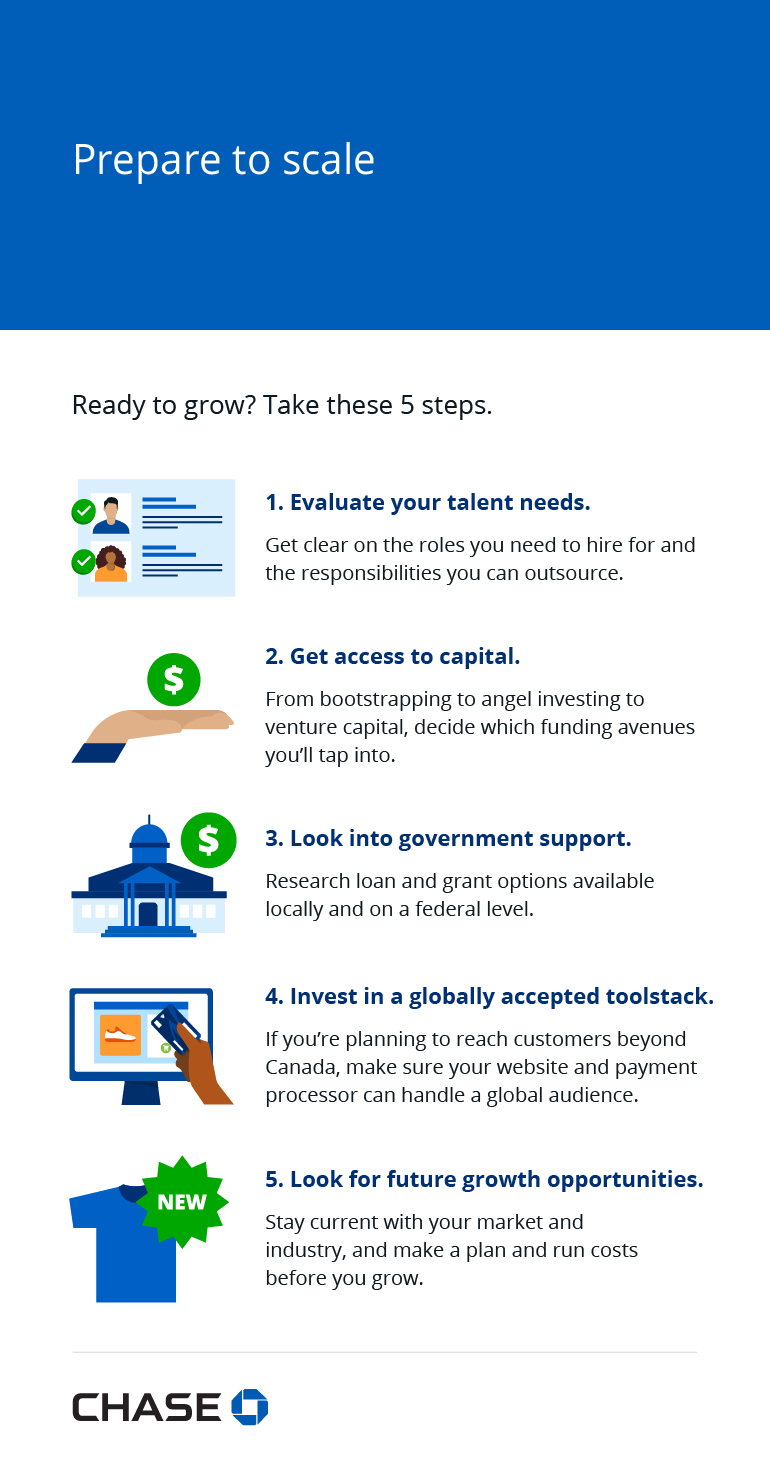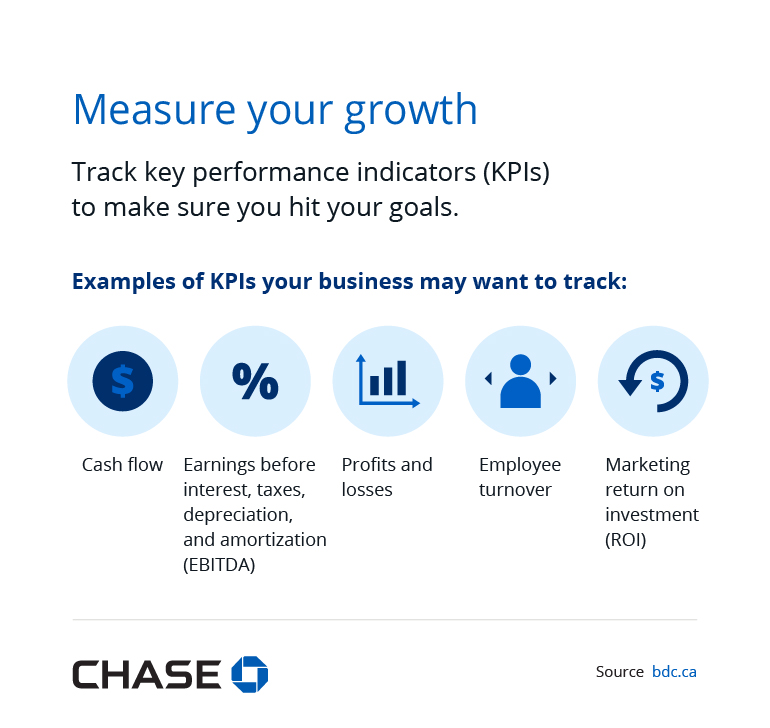How to scale up your small business
By Kathleen Garvin

Small business is big business in Canada.
Canada boasts more than 1.22 million small- and medium-sized businesses (or SMBs), according to the Canadian government. While the term “small business” sometimes conjures up images of side gigs and hobbies, it applies to any operation that employs fewer than 100 people and owns assets totalling $10 million or less.
If you’re in the small-biz category and looking to grow, you have a few items to consider — from when and how to make the move to hiring and payroll. Whether you run a one-person show, a family-owned company, or lead a 99-person operation, it takes a lot of effort to scale a business. You’ll want to devise a strategy and action plan to avoid common pitfalls.
If you’re ready to take your small business to the next level, here’s an overview of what you need to know. This article will help guide you through the steps you may want to take and explain how to measure your progress once you’ve begun scaling your operation.
When is it the right time to grow the business?
The “right” time is relative to your small business and will vary depending on many factors. But if you’re thinking of marching your business into the next stage of growth, consider the following.
Your length of time in business
Ideally, you should have an established business model before scaling. However, you don’t need to wait until the 10-year mark. In fact, close to 75% of firms that grew “did so within the first five years of being established,” according to a Canadian government survey. So don’t let being in business “only” for a few years be a deterrent.
The state of your finances
If you haven’t been keeping solid financial records, now’s the time before deciding whether or not you should (and can) scale your business. That same Canadian survey found that “the probabilities of firms scaling up and scaling down were both positively related to profitability and both negatively related to the financial leverage ratio.” In other words, the survey results suggested that the financial position of a business has a big influence on its ability to effectively scale up.
Your business longevity
You’ll want to ensure your business isn’t a flash in the pan or a response to a unique situation. Conduct market research and look at trends before proceeding with any major growth plans. Make sure your small business has staying power before fully leaning in and levelling up.

Consider these factors before you grow your business.
- The length of time you’ve been in business
Haven’t been in business for 10 years? That’s okay! In one Canadian study, 75% of firms that grew were in their first 5 years of being in business. - The state of your finances
Solid financial records are a must, and consider your profitability when deciding whether now is the time to scale. - Your business longevity
Examine market research and trends to make sure your business has staying power.
Sources:
5 key steps to growth
Once you’ve done your homework and have a good idea of the state of your business, financials, and industry, it’s time to look at how to grow your small business.
1. Bring on talent.
When the time comes to grow your business, you’ll likely need to expand your staff to cover new roles or to delegate responsibilities you’ve held on to for too long (or maybe a combination of the two). Get clear on the roles you need and the roles you may eventually hire for but don’t have the budget for at this time. Also, determine if any new roles will be in a full-time capacity or less, or whether you have work you can outsource to an agency.
2. Get access to capital.
If you need more money to support your business goals, consider your options. From bootstrapping to angel investing to venture capital (VC), you can fund growth in many ways. Before you make a decision, decide which avenues you can tap into and which you’re willing to potentially give up. For example, if you have a large network, you may be able to rely on your circle to lend you money to support your business. Or if you’re comfortable giving up some equity and answering to a board, VC might be the way to go.
3. Look into government support, both locally and at the federal level.
The Canadian Government offers support to small business owners in several ways. Whether you’re looking for help securing a business loan or grant money, research options may be available to you. In 10 years alone, the Canadian Small Business Financing Program has provided small businesses with more than 56,000 loans equating $10 billion. Also, there may be financial support and programs available to you in your province or through mentorship or entrepreneurial councils.
4. Invest in a globally accepted toolstack.
A toolstack is a collection of software tools to work on different parts of a related system. Adopting one is especially crucial if you’ve operated locally and are looking to grow globally. Make sure everything from your E-commerce website to your payment processor is equipped to handle a global audience when you decide to expand your small business. Certain apps and plugins will automatically display a buyer’s currency and language on your business website, for example, based on the user’s IP address.
5. Assess the marketplace for future growth opportunities.
Make sure you have your finger on the pulse of what’s going on in your market and industry. If sales or margins aren’t healthy, assess whether it makes sense to pause your growth plans or consider pivoting within the field. Avoid growing your operation just for the sake of it; make a plan, run costs, and be sure the opportunity is there.
These five steps are a starting point for growing your small business. Once you’ve decided to scale, it’s important to put parameters in place to measure your progress and adjust existing processes if needed.

Ready to grow? Take these 5 steps.
- Evaluate your talent needs.
Get clear on the roles you need to hire for and the responsibilities you can outsource. - Get access to capital.
From bootstrapping to angel investing to venture capital, decide which funding avenues you’ll tap into. - Look into government support.
Research loan and grant options available locally and on a federal level. - Invest in a globally accepted toolstack.
If you’re planning to reach customers beyond Canada, make sure your website and payment processor can handle a global audience. - Look for future growth opportunities.
Stay current with your market and industry, and make a plan and run costs before you grow.
How to measure success
Similar to a business plan, it’s important to markup different success indicators in your quest to scale your business. Key performance indicators (KPIs) are a type of targeted measurement that can help you stay on track and hit outlined goals. KPIs are important so you can investigate any shortcomings or make adjustments (and celebrate wins!).
Examples of KPIs you might track for your small business company-wide (and in no particular order) include:
- Cash flow
- Earnings before interest, taxes, depreciation, and amortization (EBITDA)
- Profits and losses
- Employee turnover
- Marketing return on investment (ROI)
And many, many more.
KPIs can help you gauge performance and incentivize your team to hit chosen targets. Depending on your industry and preference, you may choose to review your metrics weekly, monthly, quarterly, or yearly. Regardless, it’s a good practice to capture these numbers and see how you compare over a selected timeframe so you can confidently operate your business.

Track key performance indicators (KPIs) to make sure you hit your goals.
Examples of KPIs your business may want to track:
- Cash flow
- Earnings before interest, taxes, depreciation, and amortization (EBITDA)
- Profits and losses
- Employee turnover
- Marketing return on investment (ROI)
Sources:
Measure, review, and move onward
As a small business, you may not be ready to think about big growth — but it’s important to think about scalability as you make important business decisions, like bringing on new hires, investing in new software and hardware, and introducing new products and services. So long as you continue to optimize your talent, sales, and marketing channels — and track your data all the while — you’ll be in a good position to grow your small business today and in the years to come.